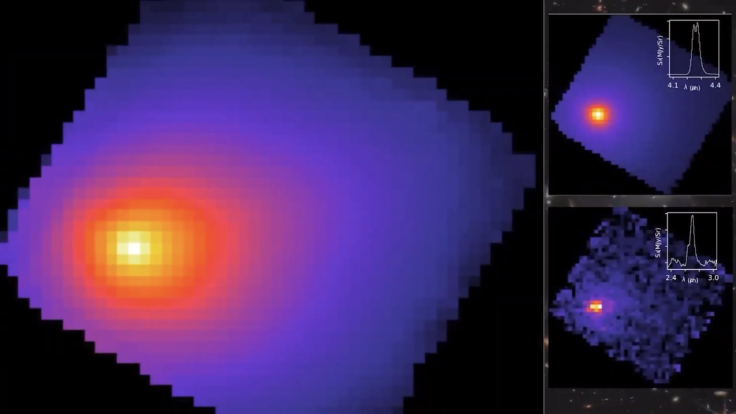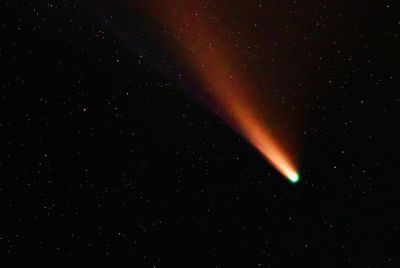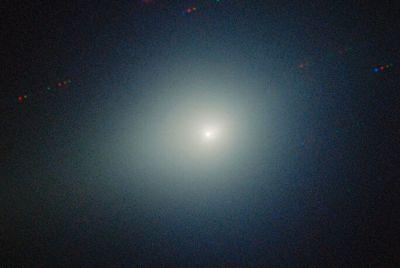NASA Detects Mysterious Pulses From 3I/ATLAS—Could It Be a Signal From Alien Life?
Scientists rule out alien signals as rare comet-like object from another star system nears the Sun.

NASA is investigating puzzling radio pulses detected from 3I/ATLAS, a rare interstellar comet currently moving through the Solar System.
The discovery, first reported by observatories tracking the object's hyperbolic path, has fuelled widespread speculation about possible alien involvement.
Yet researchers caution that all data so far remain consistent with a natural celestial body. Using spectroscopic and radio analyses from the James Webb Space Telescope (JWST) and NASA's Deep Space Network, scientists describe 3I/ATLAS as a unique but explainable object that challenges—not overturns—current understanding of cometary physics.
Unusual Visitor From Beyond the Solar System
The object, initially catalogued as C/2025 N1 ATLAS, was discovered on July 1 by the Asteroid Terrestrial-impact Last Alert System (ATLAS) telescope in Chile.
NASA confirmed it is only the third interstellar object ever detected passing through our solar system after 'Oumuamua in 2017 and Borisov in 2019.
Astronomers quickly noted that 3I/ATLAS follows a hyperbolic trajectory, meaning it is not gravitationally bound to the Sun and will eventually return to interstellar space.
According to The Times of India, scientists described it as a 'rare Black Swan object' because of its anomalous speed, tilt, and composition, which differ sharply from those of ordinary comets.
Debate Over Alien Technology Hypothesis
Speculation intensified after Harvard astrophysicist Avi Loeb and colleagues published a preprint suggesting that some of the object's properties — its orbital alignment and reflectivity — could, in theory, match alien technology.
Loeb clarified that his team's work was a 'pedagogical exercise,' intended to examine the possibility rather than claim proof of extraterrestrial design, according to Live Science.
NASA, however, has publicly rejected suggestions that 3I/ATLAS is anything other than a comet.
'It looks like a comet. It does comet things... the evidence is overwhelmingly pointing to this object being a natural body,' said Tom Statler, NASA's lead scientist for small-body research.
The agency also confirmed that the object poses no threat to Earth.
Interest surged after Loeb and collaborators released a pre-print on arXiv, examining whether 3I/ATLAS's brightness and orbital alignment might theoretically match artificial characteristics.
Chemical Composition Deepens the Mystery
Data from the James Webb Space Telescope (JWST) indicate that 3I/ATLAS has an unusually high carbon-dioxide-to-water ratio of 8:1, one of the largest ever recorded in a comet.
The findings, published on arXiv, imply that the object may have formed in a region rich in CO₂ ice far beyond the Sun's influence.
Further analysis also found water-ice grains and volatiles common in comets, supporting NASA's natural-origin assessment while underscoring that the body's chemistry is unlike anything seen in the solar system.
NASA interprets this as proof of a natural, though unusual, chemistry rather than alien engineering. Still, researchers admit that such an extreme ratio challenges established models of comet formation.
Public Fascination and Scientific Discipline
The notion that an object from another star system might emit mysterious pulses has captured global imagination. However, NASA and most astronomers caution against premature conclusions.
The 'alien signal' theory remains unproven, and there is no verified detection of intelligent communication from the object.
'Extraordinary claims require extraordinary evidence,' Loeb himself has often noted in his published works, echoing the scientific community's insistence on rigorous verification.
For many, the episode is also a lesson in science communication--balancing curiosity with critical thinking.
The widespread interest, scientists say, can help inspire young people to pursue astronomy and physics, as long as speculation is grounded in fact.
Continued Monitoring and Next Steps
NASA and partner observatories continue round-the-clock monitoring as 3I/ATLAS approaches its closest point to the Sun around October 29, according to The Times of India.
Astronomers are conducting spectroscopic analyses to measure how the object's activity changes as it heats up.
They are also monitoring for non-gravitational accelerations — tiny deviations from its expected path — that could hint at outgassing or other physical effects.
Ground-based and space-based telescopes are coordinating to detect transient emissions or unusual light patterns, which might resemble a 'technosignature.'
NASA said the aim is to collect comprehensive data before 3I/ATLAS departs the inner solar system, ensuring that 'every anomaly is measured, not imagined.'
Outlook: A Natural Enigma, Not an Alien Message
So far, no credible evidence suggests that 3I/ATLAS is transmitting artificial signals.
The comet's behaviour remains consistent with a volatile-rich interstellar body, offering scientists a rare opportunity to study primordial material from beyond the Solar System.
As NASA stated, 'Interstellar visitors like 3I/ATLAS are time capsules—remnants of planetary systems long vanished.'
The mysterious pulses may yet find a mundane explanation, but their intrigue reminds humanity that cosmic discovery begins not with certainty, but with wonder.
© Copyright IBTimes 2025. All rights reserved.





















